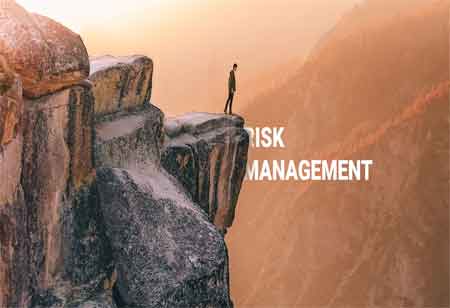THANK YOU FOR SUBSCRIBING
Be first to read the latest tech news, Industry Leader's Insights, and CIO interviews of medium and large enterprises exclusively from CFO Tech Outlook
THANK YOU FOR SUBSCRIBING

By
CFO Tech Outlook | Tuesday, June 15, 2021
Stay ahead of the industry with exclusive feature stories on the top companies, expert insights and the latest news delivered straight to your inbox. Subscribe today.
To keep up with the changing risk landscape, enterprises need a digitized system that brings all risk information together and analyzes it in a user-friendly and understandable way.
FREMONT, CA: Risk management, and an organization’s method to it, is a matter that will have been making or break for many enterprises in 2020, with the advantages of risk management software becoming more evident. The pandemic and subsequent economic fallout have left any business untouched. Organizations have been forced to manage with unprecedented circumstances: transitioning whole workforces to homeworking overnight, adjusting to meet changing customer requirements and a whole range of other unexpected hurdles. Risk management software is a vital part of ensuring this stability and should be considered when forming this strategy.
Organizations have seen an increase in audit activities, possibly driven by more employees pursuing their right to whistle on malicious practices. Many are seeing their customers become proactive in demanding transparency, putting firms under even more regulatory scrutiny. Control functions are also managing with ever-changing and new regulations, and as a result, firms themselves are in danger of experiencing risk fatigue. The fundamental nature of these pressures means several businesses simply cannot afford to trust the more conventional approach- the typical ‘tick box’ mentality is insufficient to meet increasingly digitized business environments.
Risk data is not protective against risk unless it is completely understood by those who want to use it. Modernized risk management systems can create full reports, which will enhance the quality of the information provided to the board and non-exec directors. This facilitates the presentation and communication of the data to the right people. A modernized and fully integrated risk management system offers a centralized focus for engagement. Managers no longer operate in siloes, providing managers full visibility of how risk events may be interconnected and impact one another. Enabling managers to have a much clearer picture of their responsibilities scales their input and control, giving them ownership over the whole process.
I agree We use cookies on this website to enhance your user experience. By clicking any link on this page you are giving your consent for us to set cookies. More info



